Melanie Kline
Melanie Kline, Welcome Home Montrose/Warrior’s Resource Center
by Kathryn R. Burke
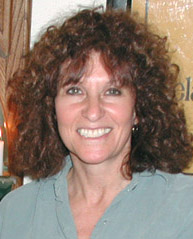 [Montrose, Colo. Feb. 18, 2014] “It was a Sunday morning, I was watching television and I saw this video about wounded warriors returning home and how hard it was for them. I started thinking – what could we do to help them and their families. How could we create a bridge from military life to civilian life – integrate veterans and their families back into the community. What would it take?
[Montrose, Colo. Feb. 18, 2014] “It was a Sunday morning, I was watching television and I saw this video about wounded warriors returning home and how hard it was for them. I started thinking – what could we do to help them and their families. How could we create a bridge from military life to civilian life – integrate veterans and their families back into the community. What would it take?
“I got up of that couch energized with ideas!” Melanie Kline said.
After watching that program, Melanie realized that many of these men and women suffered not only physical wounds, but psychological wounds as well. Their suicide rate and divorce rate is unusually high, and assimilation back into their former lives is difficult, especially when they feel they are a burden to their families or can no longer follow their chosen career path. She began to think about possibilities: how – and were – to create a healthy environment for these veterans, where they would have jobs, health care, and community support.
One of the support systems the program mentioned was adaptive sports. When wounded warriors can no longer participate in normal physical activities, they can often excel in adaptive programs. They can swim, kayak, ski, and with help, engage in many other physical activities. And, Melanie had a “Eureka” moment. “Montrose! We have water, nearby-Teluride has adaptive ski programs, we have good weather and can provide good jobs. We have the small town feeling but with big town possibilities.” And, right then and there, the concept of Welcome Home Montrose was born.
It took two more years of research, creating awareness, and forming community partnerships. “People want to support those who served,” Melanie said. “They just didn’t know how.” So Melanie, and others who joined her in developing this program, started with focus groups, meeting at the Pavilion, exploring each area of need – health care, activities, jobs, service. As Welcome Home Montrose (WHM) evolved, and with it the Warrior Resource Center, Melanie discovered “a portal of giving like there never was before. It was magical!,” she said. “People want to support our veterans.”

Oveta Culp Hobby, born 1905, was the first commanding officer of the Women’s Army Corps (WAC) during WWII. She later served as the first secretary (and first female secretary) of the US Department of Health, Education, and Welfare.
More than 7400 veterans are registered with the VA. They reside throughout the area, which includes Ouray, San Miguel, San Juan, and Delta counties as well as Montrose. There are still a few from World War II, a few more from Korea, many from Vietnam, and now more coming every day from more recent military engagements. More than 500 have already registered with the WHM’s Warrior Resource Center (WRC), an all-volunteer entity, which helps the community understand the unique needs of veterans and their families. Through its vounteer staff, the center acts as a facilitator, fostering relationships with community providers for health care, counseling, adaptive sports and other physical activities, job placement, merchant discounts, and other services that target veterans and help form a bridge between military and civilian life.The physical facility provides office space, a computer lab, and a location for social activities.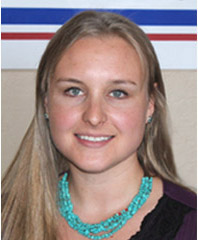
With the help and determination of Melanie Kline and WRC director, Emily Smith, and a host of caring, dedicated volunteers, Welcome Home Montrose, a grassroots community initiative, is working diligently – and successfully – toward their goal of making Montrose, Colorado the most “veteran friendly” community in America.
Melanie sums up WHM long term goal: “We want to set the standard for other cities to follow in how to serve those who stepped up to serve all of us. By strengthening our services, identifying and filling our gaps, creating programs and removing the barriers in our infrastructure, we are preparing a place for our wounded warriors to visit and hopefully, to stay.”
Visit their website for current activities, events, new goals, and projects.
This article also appears on website for the Woman’s Club of Ouray County. Designed and maintained by Kathryn R. Burke.
Update: As of 2017, both Melanie Kline and Emily Smith have retired from Welcome Home Montrose. Emily is working with Melanie at Colorado High Grade Silver Studios in Montrose, Colo. The the WRC has changed its name to Welcome Home Alliance for Veterans and moved to a new location at 4 Hilcrest Plaza Way, Montrose, Co. Visit their website for more information.
Related Articles.
Related articles:
‘Welcome Home Montrose Projects More Growth in 2014′. William Woody. The Watch. January 14, 2014
‘Montrose Recruits Veterans’ CPR, Eric Whitney
‘Welcome Home Montrose’ by Jared Bolhuis UTube Video.
‘Montrose wants to welcome vets home with more than a parade’By Nancy Lofholm, The Denver Post. Feb 22, 2012.
‘Welcome Home Montrose to welcome more wounded veterans’. By Nancy Lofholm. Denver Post. March 15, 2013.
This article also appears on website for the Woman’s Club of Ouray County. Designed and maintained by Kathryn R. Burke

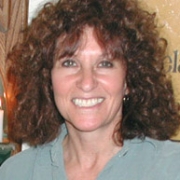

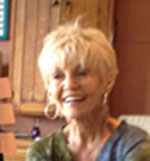
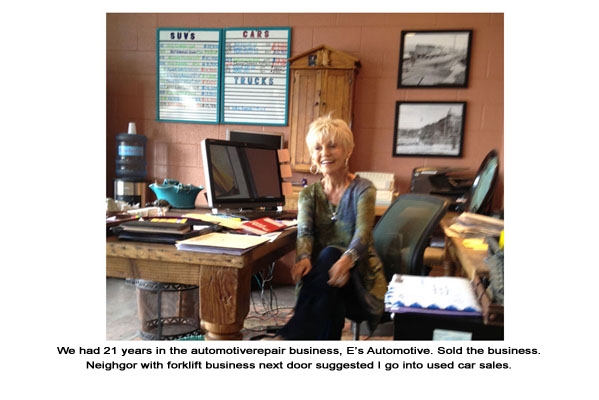
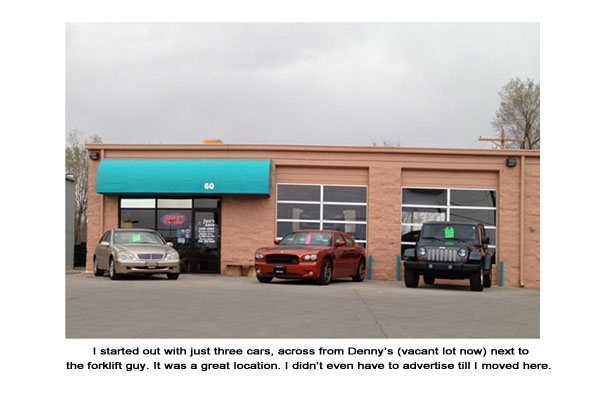
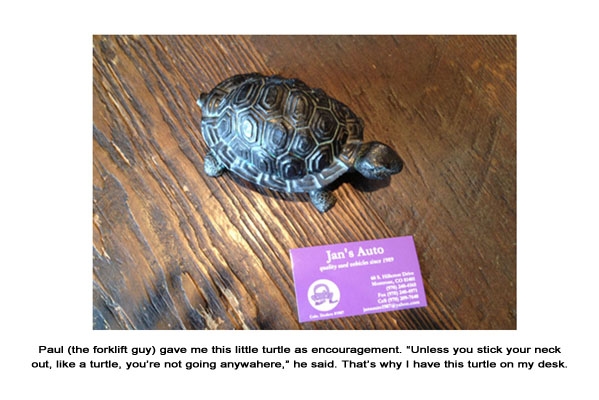
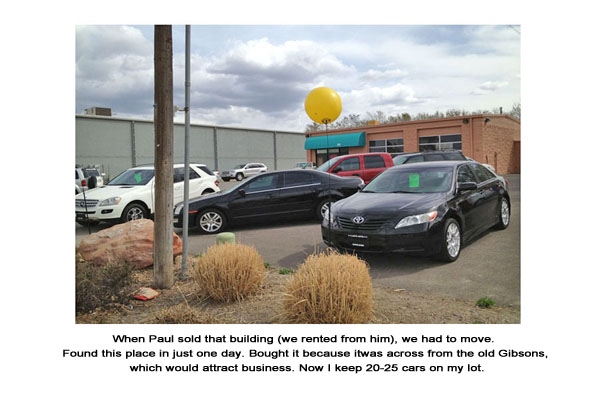
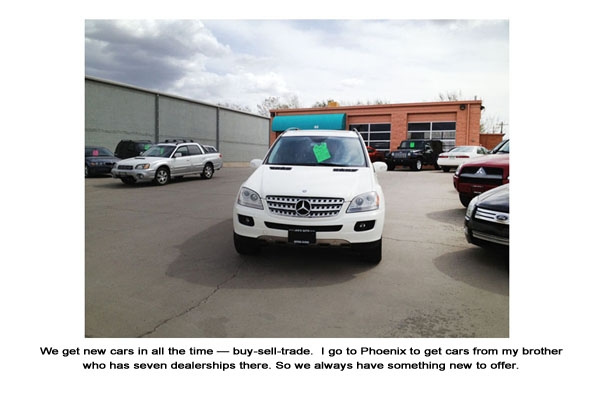

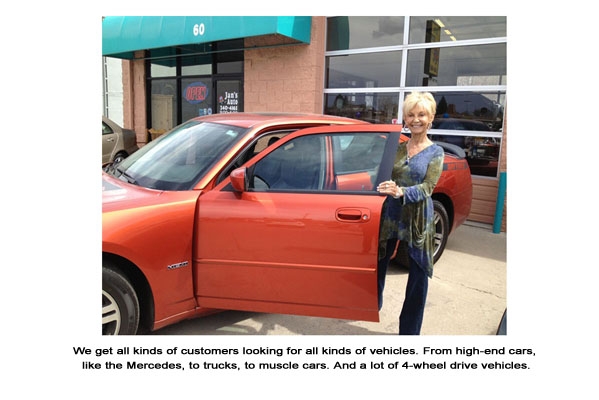

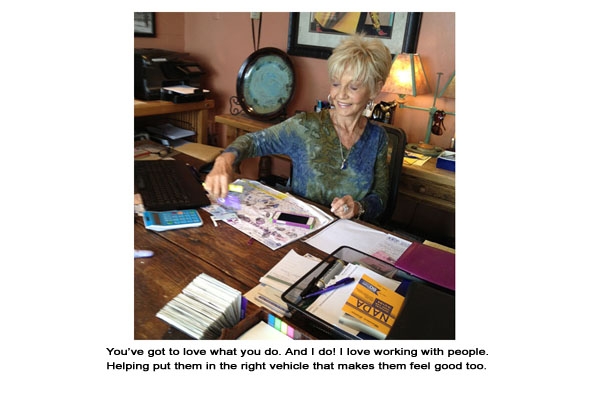
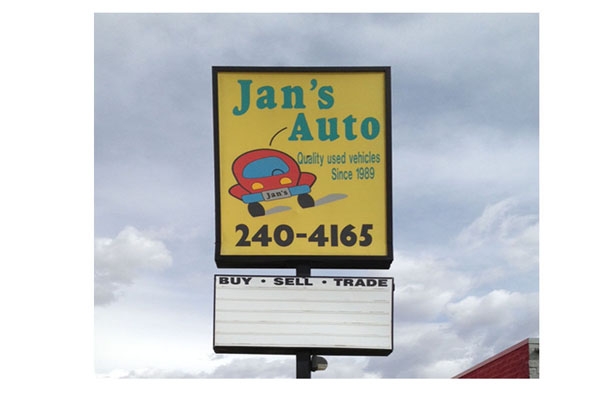
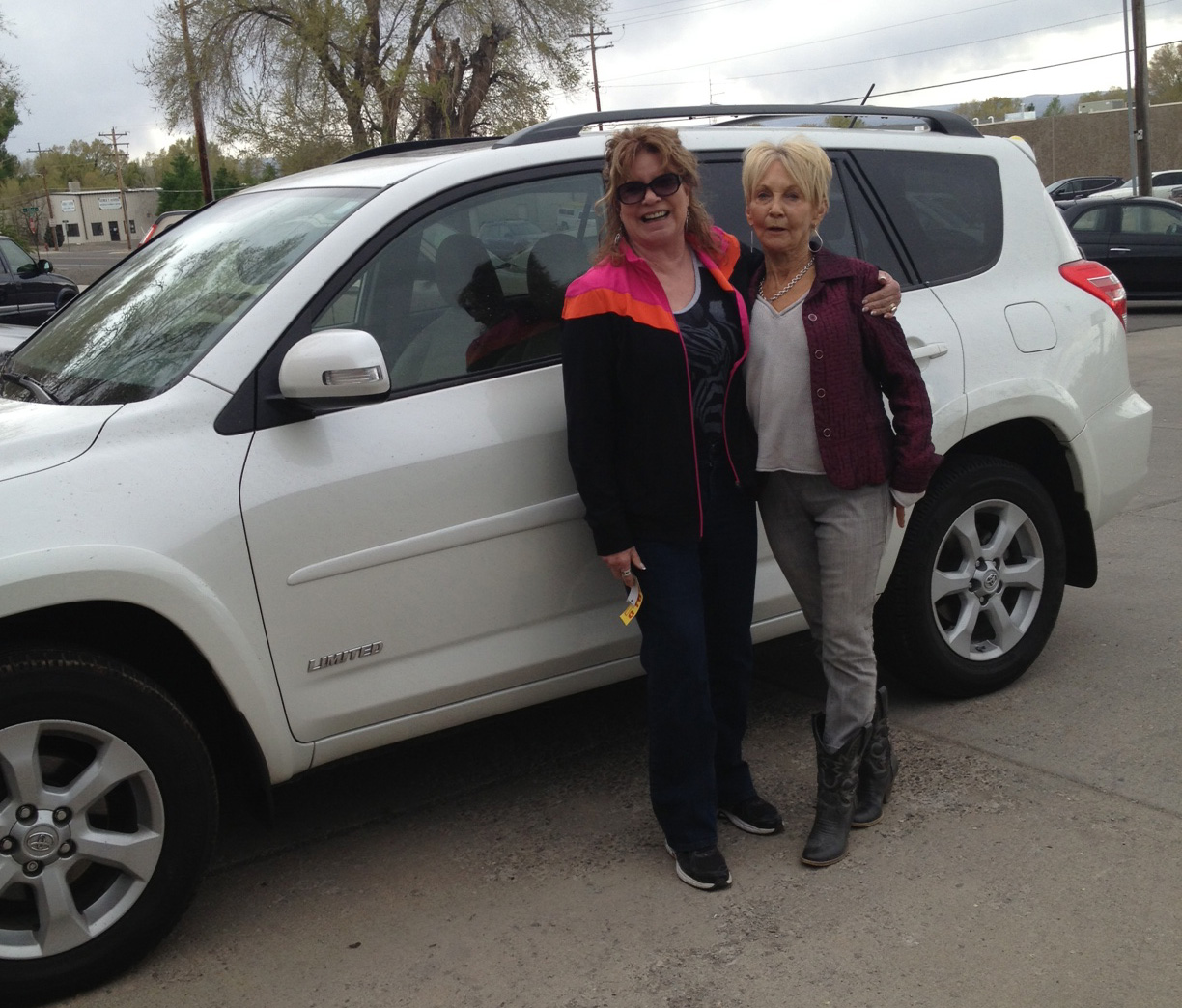
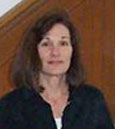
 A Balancing Act. [Ouray Colo., April 21. 2015] Connie Hunt comes from a family of eight, so learning to balance people, tasks, and time comes naturally. And with a background of nine years in banking, 25 consecutive years in county administration, and a masters degree in public administration, Hunt understands how to balance people and politics.
A Balancing Act. [Ouray Colo., April 21. 2015] Connie Hunt comes from a family of eight, so learning to balance people, tasks, and time comes naturally. And with a background of nine years in banking, 25 consecutive years in county administration, and a masters degree in public administration, Hunt understands how to balance people and politics.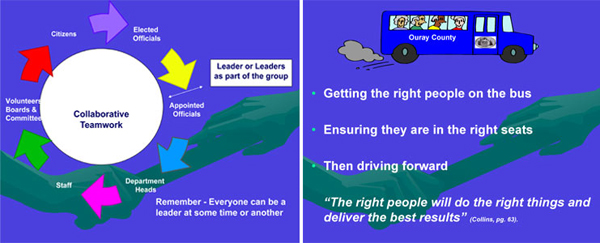
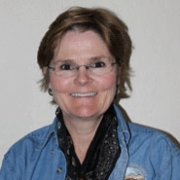
 [Ouray, Colo. March 15,2016] Collen Hollenbeck is now on her second term as elected coroner and has held that position since 2011. Before that, she served as deputy coroner under Gary Miller, who suggested she run when he retired from the position.
[Ouray, Colo. March 15,2016] Collen Hollenbeck is now on her second term as elected coroner and has held that position since 2011. Before that, she served as deputy coroner under Gary Miller, who suggested she run when he retired from the position.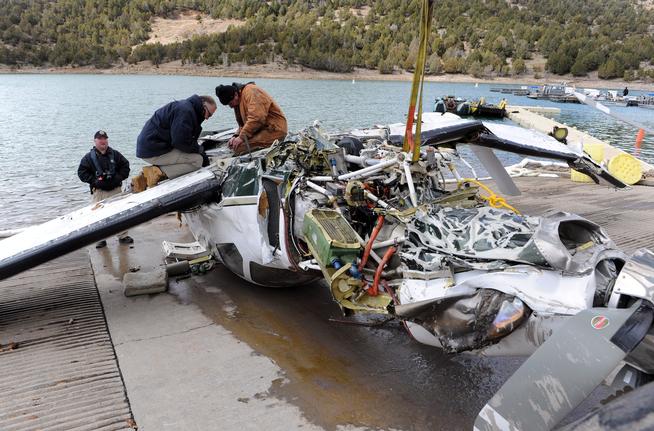
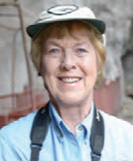
 [Ouray, Colo. March 17, 2015] “The Black Swift could be called the most elusive bird on earth,” Hirshman believes. “The birds don’t make it easy to find or observe them.” They like to nest in caves, near waterfalls, where rocky ledges and inhospitable terrain protect them from predators.
[Ouray, Colo. March 17, 2015] “The Black Swift could be called the most elusive bird on earth,” Hirshman believes. “The birds don’t make it easy to find or observe them.” They like to nest in caves, near waterfalls, where rocky ledges and inhospitable terrain protect them from predators.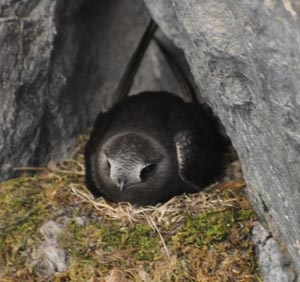 One of the more accessible locations for these mysterious birds right Box Canyon in Ouray, Colorado. Hirshman has been watching the Black Swift and recording their activities here nearly 20 years. “I hope I can study this bird until I’m 90,” she told Samantha Tisdel Wright for an article in the ‘2014 Adventure Summer Guide’ (1) “As long as I am able to walk, I am going to go over there” and watch those birds.
One of the more accessible locations for these mysterious birds right Box Canyon in Ouray, Colorado. Hirshman has been watching the Black Swift and recording their activities here nearly 20 years. “I hope I can study this bird until I’m 90,” she told Samantha Tisdel Wright for an article in the ‘2014 Adventure Summer Guide’ (1) “As long as I am able to walk, I am going to go over there” and watch those birds.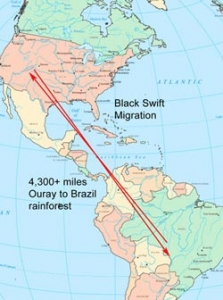 But she does more than just ‘watch.’ Using a Nikon D-90 with an AF-S Nikkor 70-300 mm lens for close-ups, she gets some outstanding photographs. Hirshman has helped team members band birds. Although Hirshman did not directly help the team to attach geo-locators, many birds were also fitted with that device to track their annual migration – all the way to Brazil and back!
But she does more than just ‘watch.’ Using a Nikon D-90 with an AF-S Nikkor 70-300 mm lens for close-ups, she gets some outstanding photographs. Hirshman has helped team members band birds. Although Hirshman did not directly help the team to attach geo-locators, many birds were also fitted with that device to track their annual migration – all the way to Brazil and back!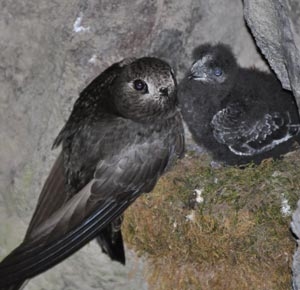 Hirshman’s observations and photographs have been reported in numerous publications and scientific studies. Google ‘Sue Hirshman Black Swift’ and you get several pages of ‘hits,’ including links to articles she writes for the local Ouray County Newspaper. (2) Hirshman relates results of a detailed study of 11 years of Black Swift breeding phenology and success at Box Canyon.(5) “Box Canyon is known as Colorado’s largest nesting colony and the most accessible viewing opportunity, which has gained world attention as an important Birding Area,” Hirshman explains. Hirshman and Carolyn Gunn are updating that study to include another nine years.
Hirshman’s observations and photographs have been reported in numerous publications and scientific studies. Google ‘Sue Hirshman Black Swift’ and you get several pages of ‘hits,’ including links to articles she writes for the local Ouray County Newspaper. (2) Hirshman relates results of a detailed study of 11 years of Black Swift breeding phenology and success at Box Canyon.(5) “Box Canyon is known as Colorado’s largest nesting colony and the most accessible viewing opportunity, which has gained world attention as an important Birding Area,” Hirshman explains. Hirshman and Carolyn Gunn are updating that study to include another nine years.
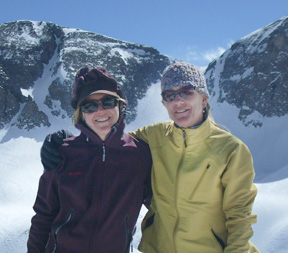 Susan Hale and Ann Mellick are avalanche forecasters for the Colorado Avalanche Information Center (CAIC). They work on the Highway 550 and 145 corridors in conjunction with the Colorado Department of Transportation (CDOT) to keep the highways safe for winter travelers. Both have been employees of the CAIC since 2006, with previous backgrounds in snow and avalanche work in the Colorado Rockies.
Susan Hale and Ann Mellick are avalanche forecasters for the Colorado Avalanche Information Center (CAIC). They work on the Highway 550 and 145 corridors in conjunction with the Colorado Department of Transportation (CDOT) to keep the highways safe for winter travelers. Both have been employees of the CAIC since 2006, with previous backgrounds in snow and avalanche work in the Colorado Rockies.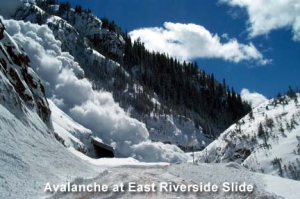 Susan. A love for the mountains and back-country adventure lured Susan to the Colorado Rockies 28 years ago. Innumerable ski mountaineering escapades and a few encounters with avalanches left her with both respect and curiosity for avalanche phenomena. This interest was piqued during her ten years with the Snowmass Ski Patrol’s Snow Safety Team where she also oversaw the Avalanche Rescue Dog program. In 2004 an irresistible opportunity came along to work as an intern forecaster for the San Juan CAIC office. Here she learned the intricacies of local highway forecasting. Two years later, Susan was on board as a full time forecaster in the Silverton CAIC office.
Susan. A love for the mountains and back-country adventure lured Susan to the Colorado Rockies 28 years ago. Innumerable ski mountaineering escapades and a few encounters with avalanches left her with both respect and curiosity for avalanche phenomena. This interest was piqued during her ten years with the Snowmass Ski Patrol’s Snow Safety Team where she also oversaw the Avalanche Rescue Dog program. In 2004 an irresistible opportunity came along to work as an intern forecaster for the San Juan CAIC office. Here she learned the intricacies of local highway forecasting. Two years later, Susan was on board as a full time forecaster in the Silverton CAIC office.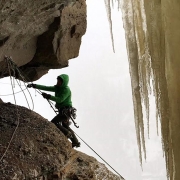
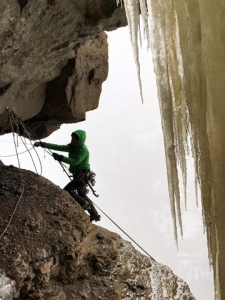 [Ouray, Colo. October 20, 2015] Beth Goralski has been ice climbing since 2001. During a holiday vacation from Colorado State University, where she was a student, Beth took an ice climbing class. “I fell in love immediately” she said. “I had been rock climbing for quite a few years, so the transition was pretty easy for me.”
[Ouray, Colo. October 20, 2015] Beth Goralski has been ice climbing since 2001. During a holiday vacation from Colorado State University, where she was a student, Beth took an ice climbing class. “I fell in love immediately” she said. “I had been rock climbing for quite a few years, so the transition was pretty easy for me.”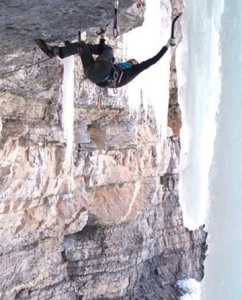 to compete in the Ouray Icefest. Last year, she also competed at the Bozeman Ice Festival in Bozeman Montana, which is now a World Cup event. This year she will return to compete in Bozeman, which is “where the world’s best mixed climbers come together to compete. There are six other world cup comps held in Europe and South Korea but Bozeman is the only one held in the Americas.”
to compete in the Ouray Icefest. Last year, she also competed at the Bozeman Ice Festival in Bozeman Montana, which is now a World Cup event. This year she will return to compete in Bozeman, which is “where the world’s best mixed climbers come together to compete. There are six other world cup comps held in Europe and South Korea but Bozeman is the only one held in the Americas.”
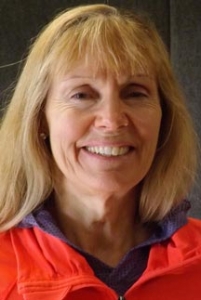 [Montrose, Colo. November 18 2014] Thirty-five years ago Lorraine Coyle and her then-husband had a glass-etching business in Lake Arrowhead, California. A lot of their products were architectural – windows and doors primarily. “I also did smaller pieces, selling them at arts and craft shows,” she says. “Which is easy to do in California, because they have a lot of them.”
[Montrose, Colo. November 18 2014] Thirty-five years ago Lorraine Coyle and her then-husband had a glass-etching business in Lake Arrowhead, California. A lot of their products were architectural – windows and doors primarily. “I also did smaller pieces, selling them at arts and craft shows,” she says. “Which is easy to do in California, because they have a lot of them.”
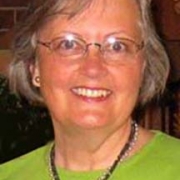
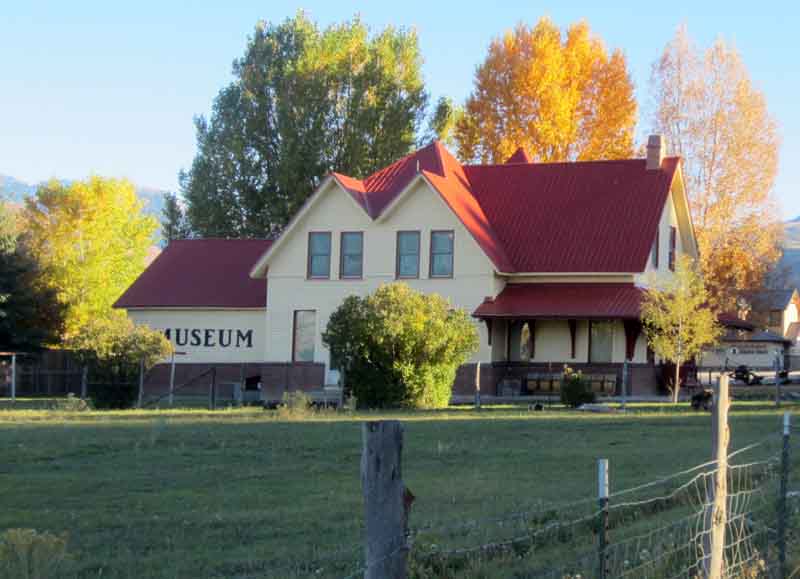
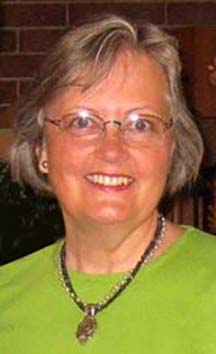
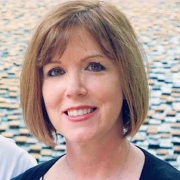
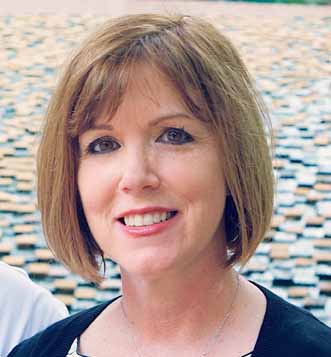 [Ouray, Colo., January 16, 2018] Bees are our friends. Bees produce honey, the only food source that never goes bad. Bees pollinate, a process that can produce a healthy garden with a bountiful crop.
[Ouray, Colo., January 16, 2018] Bees are our friends. Bees produce honey, the only food source that never goes bad. Bees pollinate, a process that can produce a healthy garden with a bountiful crop.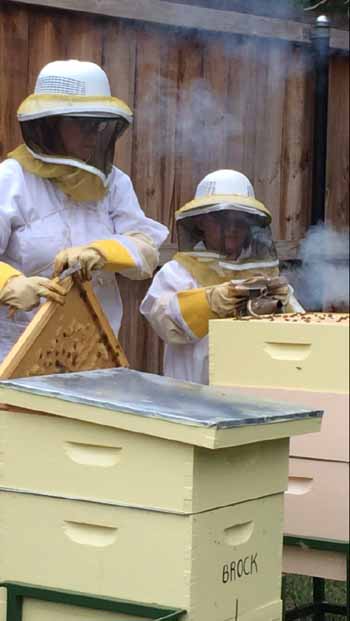 Bees have a social structure and business organization that we could all take lessons from. A typical, healthy hive has 50-60 thousand honey bees in residence, with one Queen Bee, and a harem of worker bees holding various roles from warrior to nurse. Architects make the comb and comb cleaners keep it clean. Undertakers remove the dead.
Bees have a social structure and business organization that we could all take lessons from. A typical, healthy hive has 50-60 thousand honey bees in residence, with one Queen Bee, and a harem of worker bees holding various roles from warrior to nurse. Architects make the comb and comb cleaners keep it clean. Undertakers remove the dead.